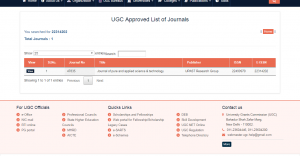Metabolic Syndrome: The Prevalence of Mounting Public Health Problem in Ghaziabad, India
Himanshu Tyagi1,*, Vishal Modgil2 and Mahendra Nath3
1,*Ph.D. Scholor, Medical Biochemistry, Shivalik Hospital, Ghaziabad, India.
2Department of Medicine, Shivalik Hospital, Ghaziabad, India.
3L.L.R. Medical College, Meerut, India.
Metabolic syndrome (MetS) is a name for a group of risk factors that occur together and increases the risk for coronary artery disease, stroke, and type 2 diabetes. The MetS is a clustering of components that reflect over nutrition, sedentary lifestyles and resultant excess adiposity. Metabolic Syndrome is posing a major public health challenge to the health systems in developed and developing countries. The 405 study subjects aged between 25-65 yrs from general population in Ghaziabad, India, were taken, who attended the hospital for general checkup. Complete fasting lipid profile, Blood glucose, and Hs-CRP, Lp(a) and GGT, blood urea and Serum Creatinine of subjects were evaluated. On application of ATP 3rd criteria on the screened subject patients, they are classified. Our study found that the number of subjects having MetS was 173 (42.71% of total). In the subgroup of metabolic syndrome with diabetes, the total number of subjects was 105(25.92%) in which age wise distribution was 26 (6.41%) in 25-45 yrs and 79 (19.50%) in 45-65 yrs. In the second subgroup of metabolic syndrome without diabetes total number of subjects was 68 (16.79%) in which age wise distribution was 16 (3.95%) in 25-45 yrs and 52 (12.83%) in 45-65 yrs. The study proposes the inclusion of biochemical parameter Hs-CRP, Lp (a) and GGT in the criteria for defining cases of metabolic syndrome, so that more metabolic syndrome cases can be picked up at earliest. This issue is especially pertinent for the Indian patient population in whom cardiovascular disease is becoming increasingly common in both sexes and in age group of 25-65 yrs. There should be emphasis on detection of metabolic syndrome and intensification of targeted preventive strategies.





